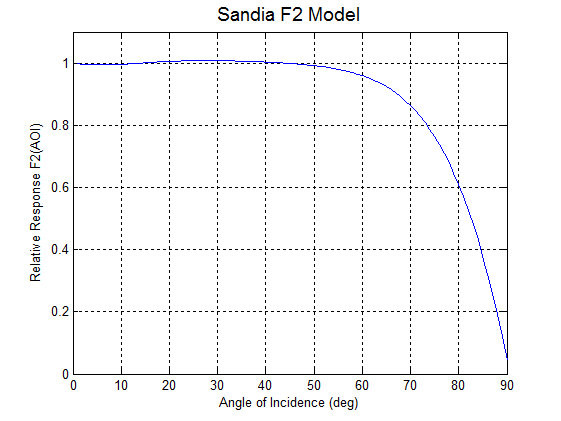Sandia has suggested using a 5th order polynomial function to represent angular optical losses on short circuit current (Isc) [1].
$$f2\left( \theta_{AOI} \right) = b_0 + b_1\theta_{AOI} + b_2\theta_{AOI}^2 + b_3\theta_{AOI}^3 +b_4\theta_{AOI}^4+b_5\theta_{AOI^5}$$
where the coefficient vector, $$b$$, is determined from fitting experimental data measured outdoors.
An example result of this model is shown in Figure 1. Note that the use of a 5th order polynomial causes a slight concave-up shape at low angles of incidence. This functional form actually results in $$f_2$$ values slightly greater than one for a portion of this range (10-45 degrees), and values greater than zero for 90 degrees. These non-physical features are downsides of this model.

Figure 1. Sandia model for incident angle modifier (on Isc)
References:
[1]. King, D. L., E. E. Boyson and J. A. Kratochvil (2004). Photovoltaic Array Performance Model. Albuquerque, NM, Sandia National Laboratories, SAND2004-3535.